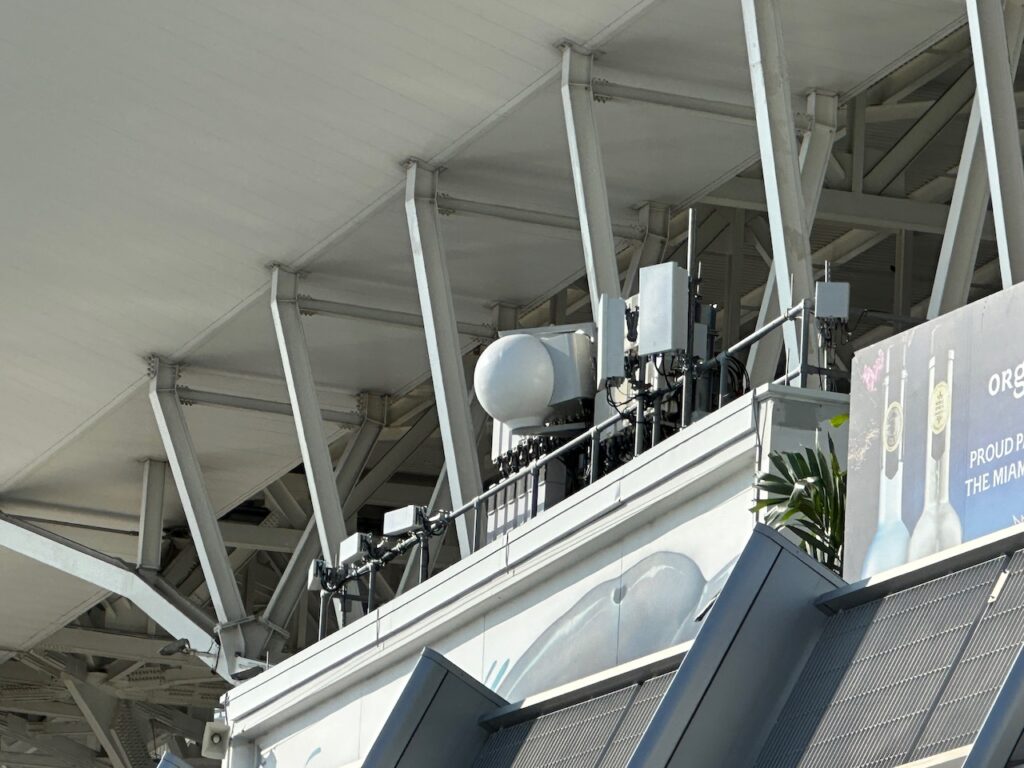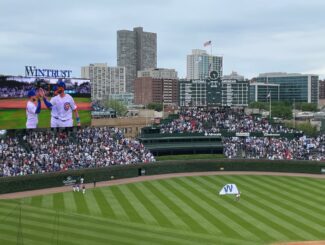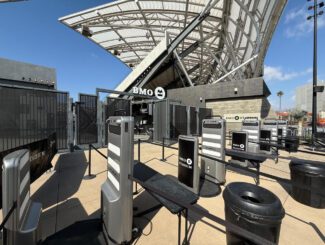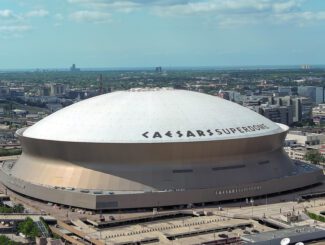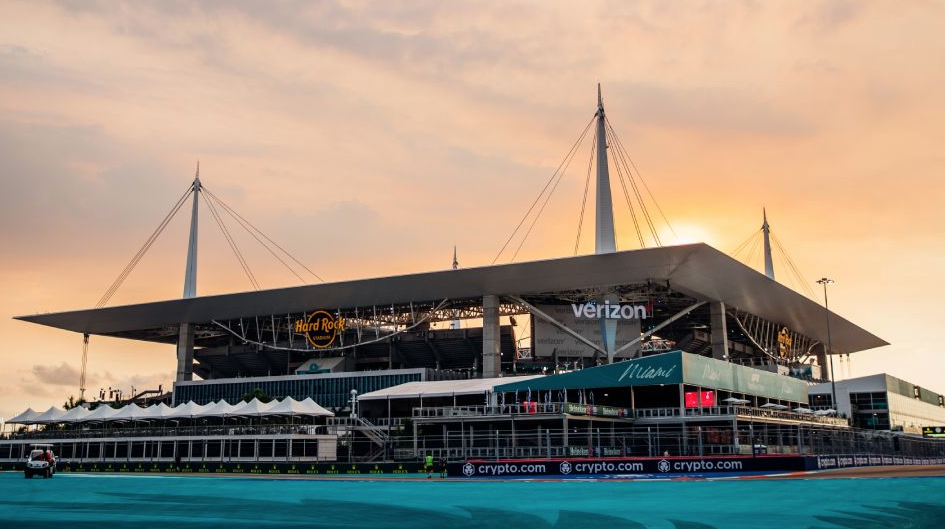
Verizon has deployed a small CBRS network to support some back-of-house operations at this weekend’s Formula 1 Crypto.com Miami Grand Prix, according to the company. Applications supported by the network include point of sale, ticket scanning, and photo uploads for professional photographers at the race.
While the CBRS network is just a very small part of Verizon’s overall wireless preparations for the race weekend — an event where Verizon said its customers last year used 19 TB of cellular data — it is another visible, working point of proof for the CBRS spectrum band, which is starting to gain stadium-based deployment momentum of late.
The F1 deployment joins Verizon’s plans to deploy CBRS networks at all NFL stadiums this year, alongside CBRS stadium deployments from Mobilitie at Dignity Health Sports Park, Boingo at Petco Park, Celona at First Energy Stadium, Comcast at Wells Fargo Center and Connectivity Wireless and JMA at Angel Stadium. And JMA also did a CBRS deployment at the Super Bowl with Dish to support broadcast communications for Fox Network.
(If you are new to the shared-spectrum game, the 150 MHz of CBRS spectrum at the 3.6 GHz range is a unique set of airwaves that is notable for supporting both licensed and unlicensed use cases. If you need a primer I highly suggest the CBRS report we did a couple years ago about how CBRS can support venues.)
Specific use cases make sense for CBRS
So why should venues consider CBRS as an addition to Wi-Fi and cellular networks? According to vendors and service providers who are currently in trial deployments, as well as from early adopter end users, the main lure of CBRS services is to provide connectivity with cellular-like mobility and security at the cost levels and deployment ease — and network ownership characteristics — of Wi-Fi. Many venues are also interested in CBRS for its ability to basically shield sensitive communications like financial transactions on their own separate, secure network.
For the Miami F1 race and for deployments like Verizon’s planned NFL sideline networks, another positive is that CBRS communications will be free of any competition with the stadium Wi-Fi networks, a problem some back-of-house operations are faced with today.
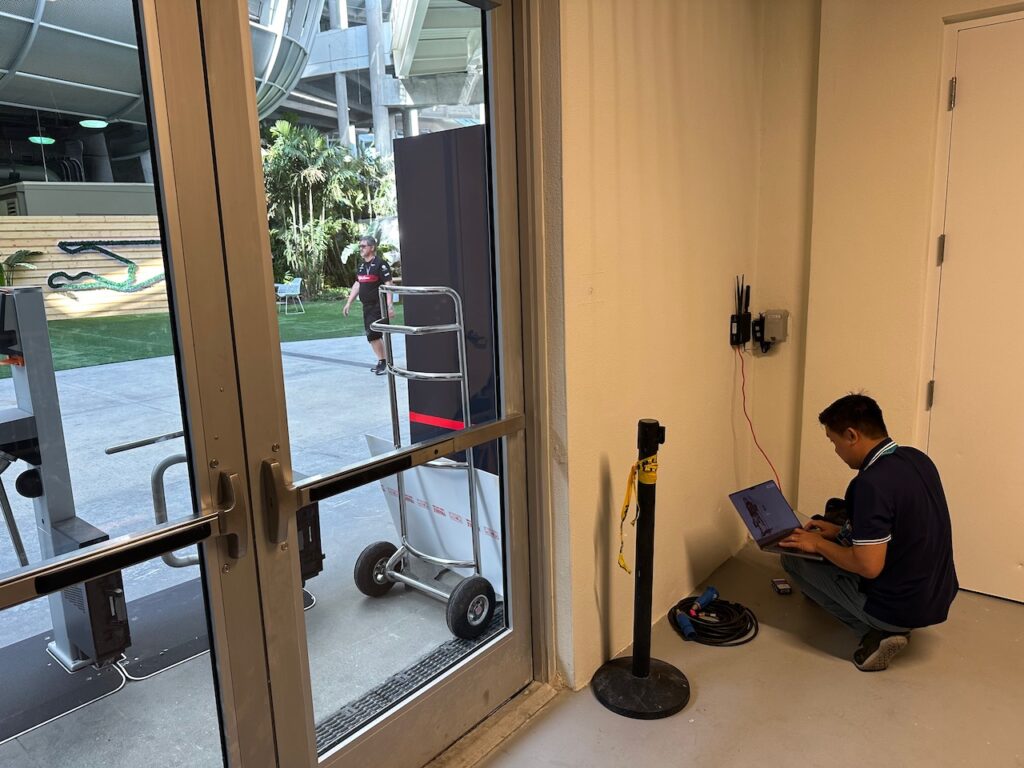
In Miami, the F1 track runs around the perimeter and parking lots of Hard Rock Stadium, with thousands of fans all over the course. Thought the CBRS network will only cover a small area, Verizon said that the demonstration will show how operations can be kept separate from the needs of potentially large crowds of fans looking for wireless access.
“It’s one way to enhance operations without having to worry about congestion on the Wi-Fi network,” said Eric Nagy, director of sports partnerships and innovation at Verizon, in an interview earlier this week.
According to Nagy, the back end of the CBRS network in Miami this weekend will consist of approximately 24 antenna nodes, some of which were previously installed on parking-lot poles.
On the client end, the scarcity of true CBRS-supporting end-user devices means that Verizon will use devices from Cradlepoint to “bridge the gap,” Nagy said. For instance, to support both some PoS terminals as well as several ticket-scanning pedestals in the paddock area, the CBRS network will connect to a Cradlepoint router near the end devices, which will connect the last few feet to the Cradlepoint devices via wired or Wi-Fi links.
Approximately six roaming photographers will have a similar bridge solution, where a belt-attached CBRS device will connect to the network, and then will link to the cameras via wires or Wi-Fi.
The parking-lot location of some of the course’s track is a perfect demonstration of one of CBRS’s attributes, its ability to send signals farther than Wi-Fi networks. “With parking lots, it’s sometimes hard to deploy Wi-Fi,” Nagy said. “This is a way to show off this Swiss Army knife of connectivity. You can make choices of where to use it.”
For the overall cellular operations at the event, Nagy said Verizon has upgraded the networks around the course with approximately 90 new radios serving the 5G C-band spectrum. Verizon will also lean on its past millimeter wave deployments for Super Bowl 54 in 2020, with 100+ nodes in operation, according to Nagy. On the 4G LTE side, Nagy said the F1 race network will have “hundreds of sectors” of coverage.
UPDATE, 5/8/23: Verizon announced that its customers used 42.9TB of data during the Miami Grand Prix weekend.
